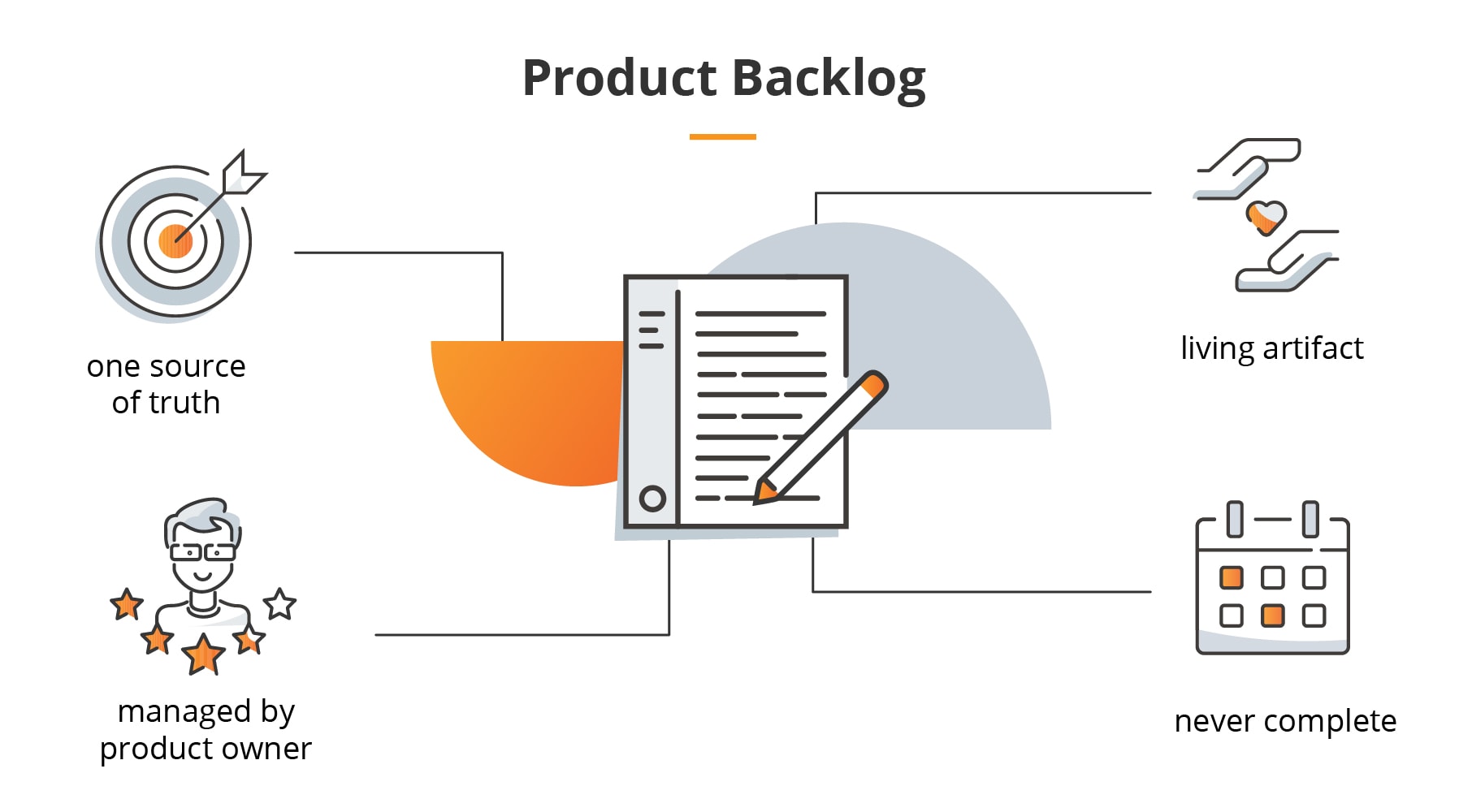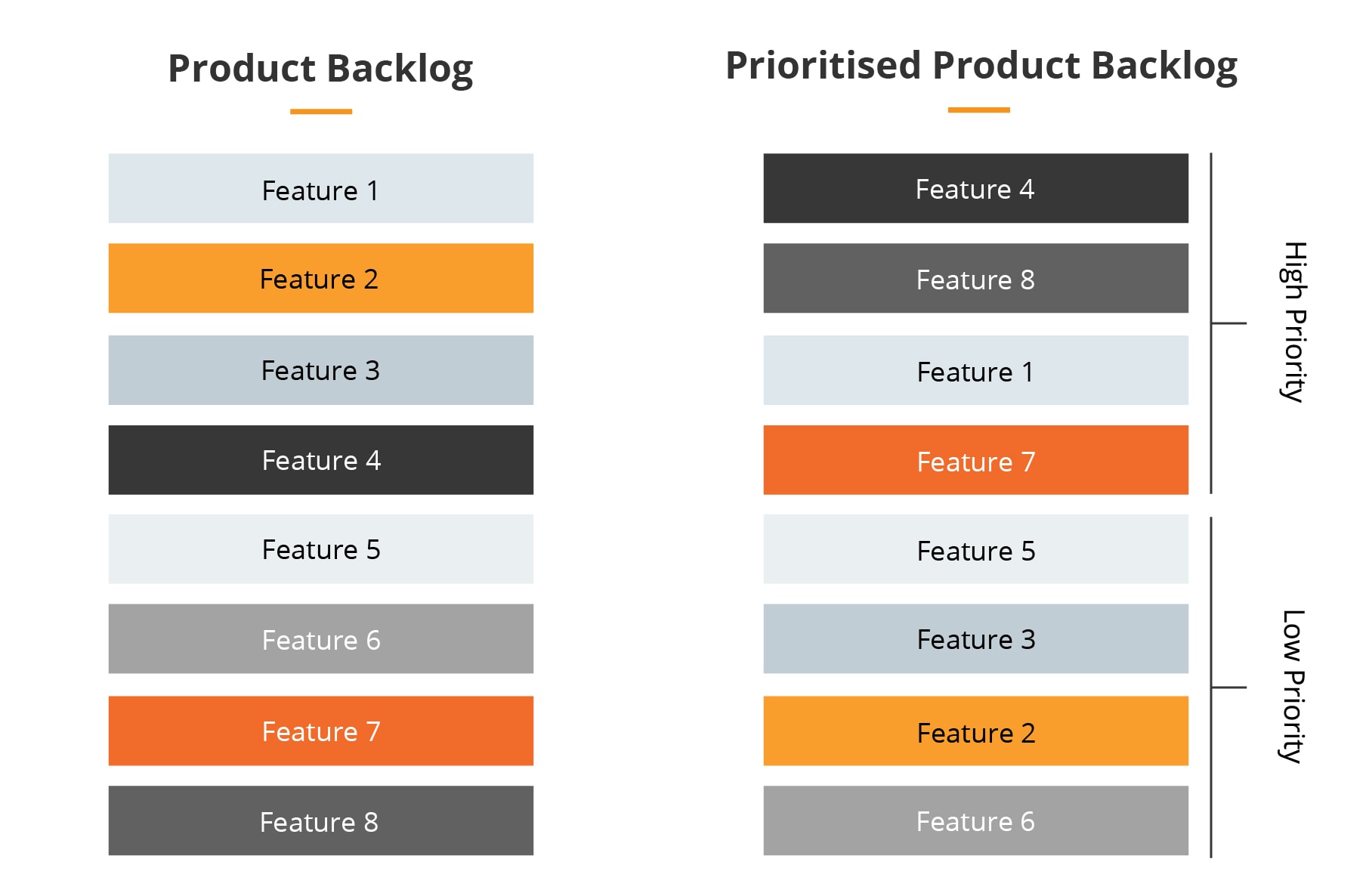
Nourishing your Product Backlog
When working on software development projects, nourishing your Product Backlog is one of the most important things to do. The health of your Product Backlog directly contributes to the success of you project. Let’s look at the process of nourishing your Product Backlog to understand why it is so crucial.
What is a Product Backlog?
We can describe it as a source of work for everyone involved in the project. As it keeps changing throughout the process, it is often called a living artifact to reflect the desired changes to the final product and clients’ feedback it incorporates.
Why nourishing your Product Backlog is so important?
Nourishing your Product Backlog determines whether the project you are working on will be a success or a failure. It gives you directions to follow and tells you which of the steps should be addressed at which stage of the project. It also guarantees that no ideas or tasks will disappear or be omitted. To some extent, a Product Backlog acts as a written agreement between all stakeholders, stating what exactly needs to be done.
How to go about nourishing your Product Backlog?
The beginning
Taking care of your Product Backlog is a task that spans throughout the whole life of the product. Or longer. This is why it’s so important to prepare it even before you start working on the project, making sure it will go in the right direction from the very beginning.
A good way to kick start developing your Product Backlog is via a Discovery Workshop – a moment where the team, even not necessarily a development team but a project team, gets to know the vision, requirements and the business idea behind the project they are about to begin. As the first touchpoint in the whole software development project, a discovery workshop is a great way to get to know each other and get the feel for the upcoming work.
Another good way of preparing the Product Backlog is via a Product Design Sprint – a five-phase process invented by Google Ventures which utilises design thinking, prototyping and testing ideas to answer critical questions about the project and think about any risks it may be facing.
When the project is ongoing
When the project is ongoing, taking care of your Product Backlog is still of the outmost importance. How to do it effectively? Consider the below points.
1. Scheduled, recurring meetings
- Prioritisation
Being on top of your Product Backlog means changing the order of the backlog’s elements to make sure the team always knows which is the most important and the most urgent one. It allows everyone to understand where to invest their time and which tasks can wait a bit.
It may be your project will come to an end earlier than planned. If this happens, by following the prioritisation the team will be sure they focused on the elements which were most important for the final product.
The prioritisation process should always be done when needed and should be undertaken by the Product Owner, in line with the input from the stakeholders. When prioritising your Product Backlog, it’s useful to have a tool which shows the impact the changing priorities will have on your deadlines.
- Backlog Refinement
It is a great opportunity for the team (including PO, DEVs/QAs, BAs and relevant stakeholders) to discuss and introduce the common understanding of each idea and a technical approach to it (the why, the what and the how). It also allows everyone to ask questions and make sure the work fulfils the DoR (Definition of Ready) principles. All team members should prepare carefully for those meetings and arrive with their heads full of questions and ideas.
2. Ad-hoc actions
- Creating new elements
Creating new elements helps with prioritisation and planning. It should be done when needed, by anyone working on the project. It consists of adding to the backlog even the vaguest ideas and thoughts, which you can describe in detail at a later stage. The tasks should be grouped into larger sections (epic – feature – story/task) and linked together. You should also make sure they don’t already exist within your backlog. - Updating existing elements
Every time you learn there is an additional thing to do, you should update your Product Backlog with all the details. This is an action that should be done by anyone who gets that kind of information. - Deleting unimportant and outdated elements
This is an important task as it helps keep the backlog clean. Elements should be deleted when the problem they concern is already solved or when the Product Owner decided you will not go ahead with them. It should be done when needed, under the Product Owner’s supervision.
After the project
Finishing your project does not mean you can forget about your Product Backlog. It should still be kept clean as you may need it in the future or someone else could use it for a different project. This is why a proper clean-up, called the Backlog Refinement, is so necessary, as well as archivisation of the entire documentation.
Wrap up
When working on a complex software development project, nourishing your Product Backlog may mean the difference between being successful and failing. If you don’t take the task seriously enough, you risk your project will end up in a mess and your team will not achieve the goal you are after.
We can guide you through the process and choose the best approach for your business. With us, any software development project will be well planned and taken care of. Check out our software services and contact us today to learn more about what our companies can do together.





